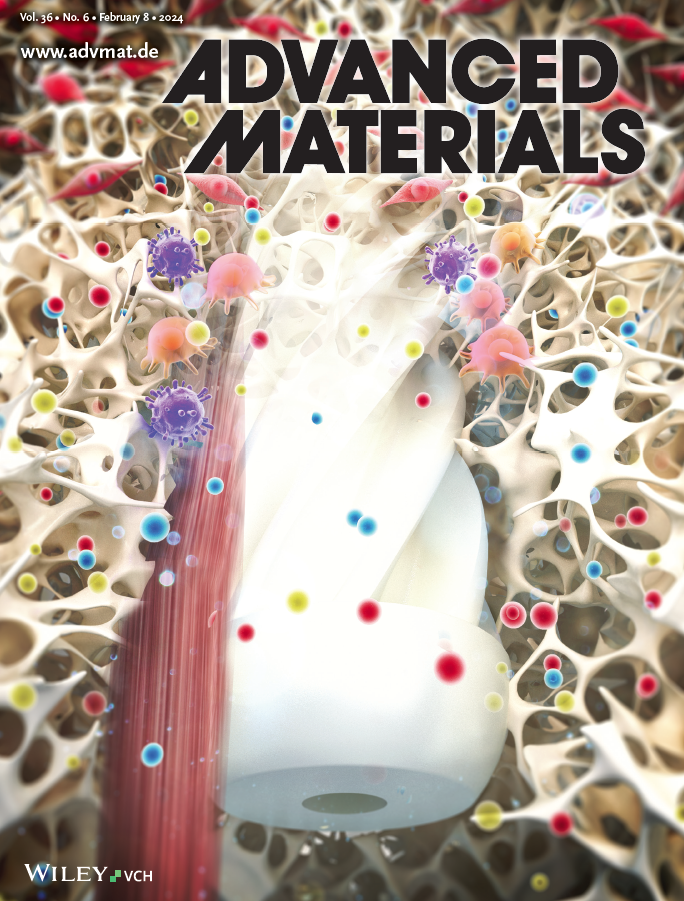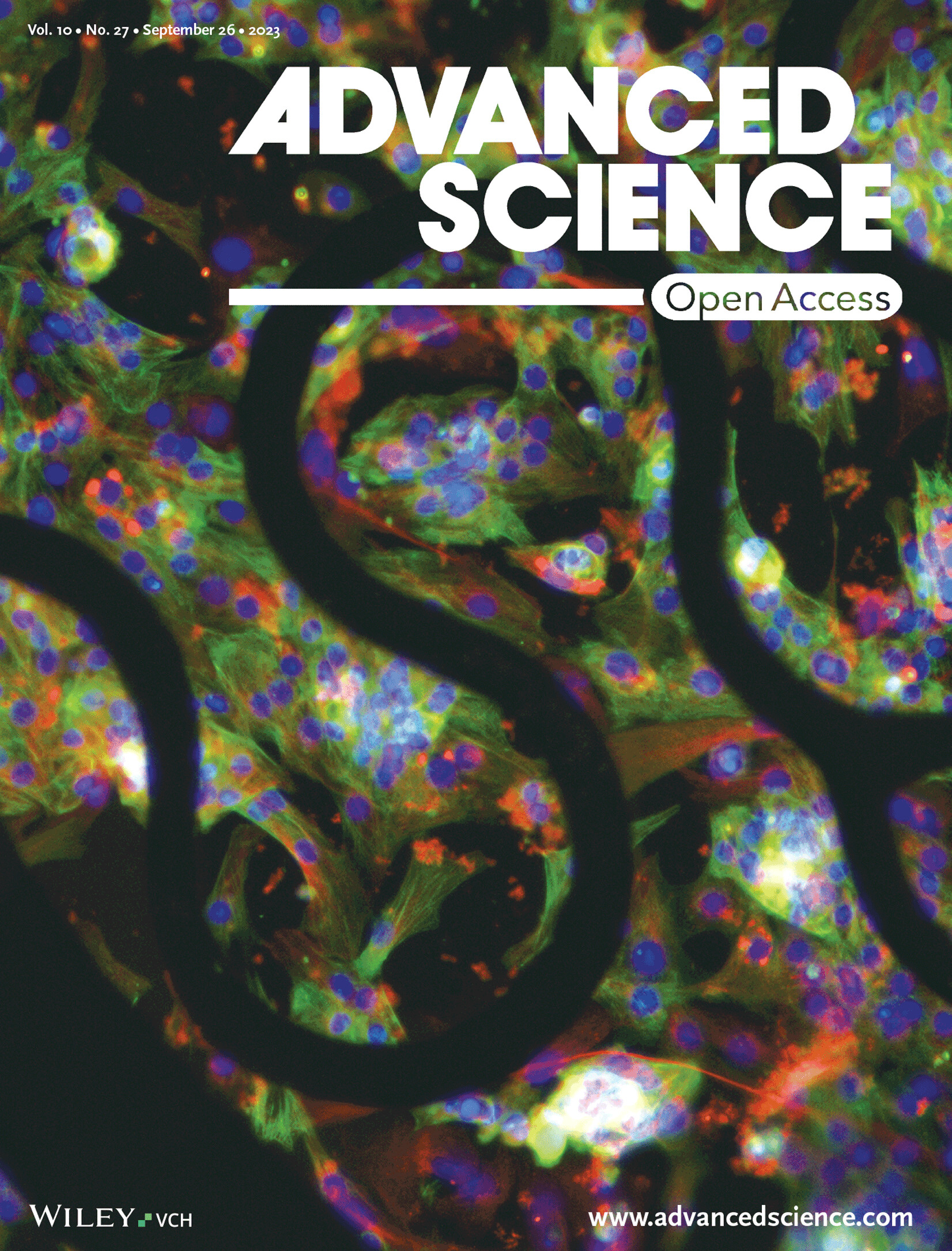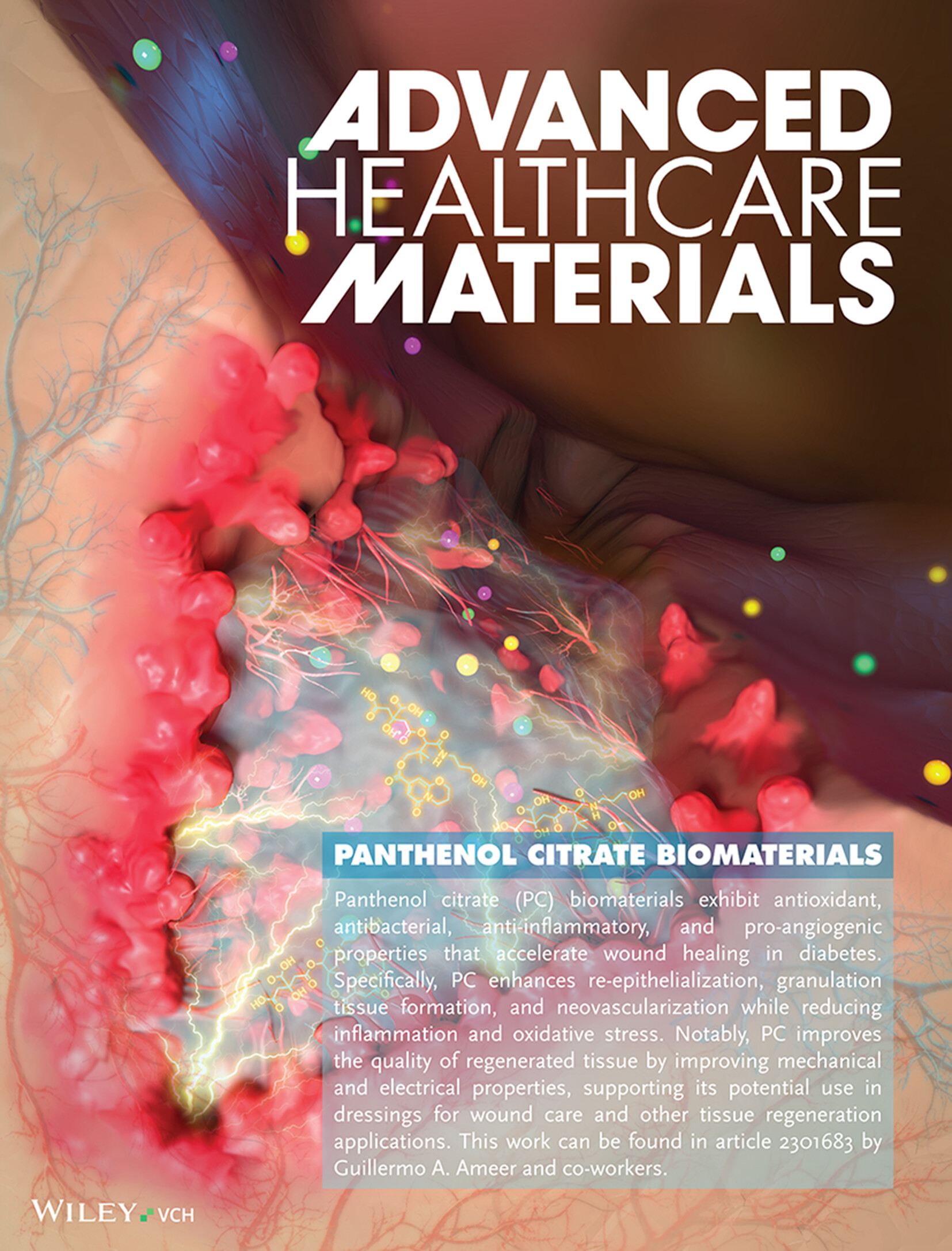Noteworthy Member Articles
| Journal | Abstract |
|---|---|

|
In article number 2306326, Huifeng Wang,Samantha Huddleston,Jian Yang,and Guillermo Ameer review the history and applications of biodegradable synthetic polymers used for medical devices marketed in the United States of America, highlight the need and requirements for regenerative biomaterials,and discuss the path behind the recent successful introduction of citrate-based biomaterials (CBBs) into the market to manufacture innovative implantable resorbable medical devices for musculoskeletal surgeries. The authors describe CBB design,synthesis, and properties that enable their use as promising regenerative biomaterials for the development of pro-regenerative medical devices that will improve patient outcomes and advance regenerative engineering and medicine. |

|
Bioresorbable materials have great potential in implantable and temporal biomedical devices. In article number 2303429, Guillermo Antonio Ameer, John A. Rogers, and co-workers demonstrate a highly conductive and elastic bioresorbable cardiac patch to treat myocardial infarction and other cardiac disorders. Studies by in vitro, and ex vivo models show regular and synchronous contraction of cardiomyocytes on the cardiac patch, biocompatibility, and reconstruction of the conductive pathways. |

|
Panthenol citrate (PC) biomaterials exhibit antioxidant, antibacterial, anti-inflammatory, and pro-angiogenic properties that accelerate wound healing in diabetes. Specifically, PC enhances re-epithelialization, granulation tissue formation, and neovascularization while reducing inflammation and oxidative stress. Notably, PC improves the quality of regenerated tissue by improving mechanical and electrical properties, supporting its potential use in dressings for wound care and other tissue regeneration applications. This work can be found in article 2301683 by Guillermo A. Ameer and co-workers. |

